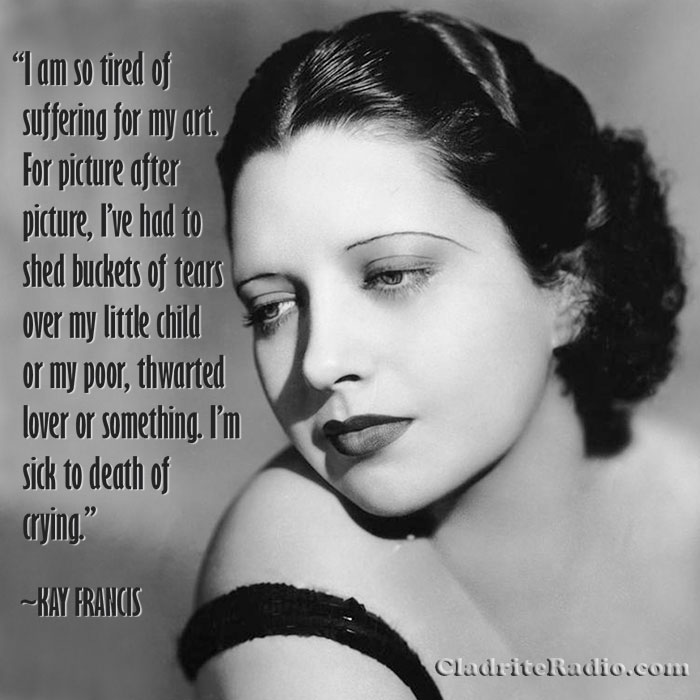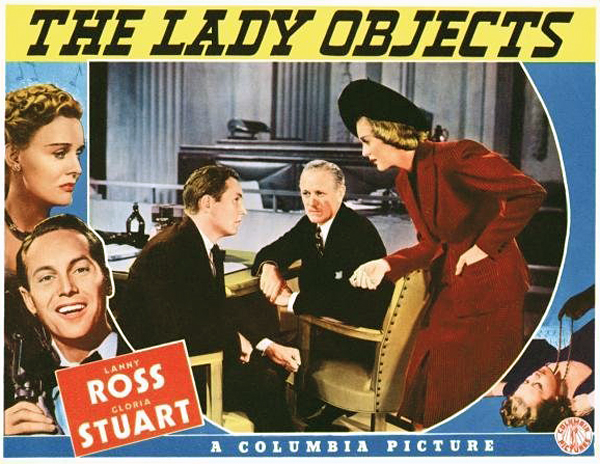Here are 10 things you should know about Alan Dinehart, born 133 years ago (or so) today. He enjoyed success on Broadway, in vaudeville and in motion pictures.
Tag: Lyle Talbot
10 Things You Should Know About Lyle Talbot
Here are 10 things you should know about Lyle Talbot, born 120 years ago today. He never saw a paycheck he didn’t like, and we love him for it. From the ridiculous to the sublime, he did it all.
Precode Movies 101: TCM Offers a Primer for Beginners
We’ve acknowledged that the precode era is one of our favorite era in movie history. For those that might not know, precode movies are those made after the ascent of sound but before the Hayes code, which greatly restricted the plot, language, and attitudes that Hollywood pictures were allowed to portray, began to be strictly enforced by the Breen office in 1934.
That quaint, wholesome quality you may associate with old movies? The pictures of the 1930s and ’40s that might convince you, if you don’t already know better, that life was simple, pure and uncomplicated back in the good old days? Those came after the code kicked in. Precode movies are another thing altogether.
Some pictures that typify the precode era are playfully bawdy; others are downright gritty, sometimes even a bit shocking today (though rarely very graphic, by our standards). Tomorrow (Tuesday, July 31st), TCM is giving precode neophytes the chance to do some serious catching up, as they’ll be airing precode favorites all day long, from 6am till 8pm. If you’ve ever wondered what the fuss was all about, here’s your chance to educate yourself.
If it’s gritty you’re looking for, we’d recommend Safe in Hell (1931) and Three on a Match (1932); if you’re just looking for a little salty fun, give Jewel Robbery (1932) and Blonde Crazy (1931) a look. But honestly, we recommend loading up your DVR with every one of these entertaining pictures; they all have something to recommend them.
Here’s the line-up (all times Eastern):
6:00 am — Downstairs (1932)
7:30 am — Loose Ankles (1930)
8:45 am — She Had to Say Yes (1933)
10:00 am — Faithless (1932)
11:30 am — Hell’s Highway (1932)
12:45 pm — Safe in Hell (1931)
2:00 pm — Jewel Robbery (1932)
3:15 pm — Three on a Match (1932)
4:30 pm — Footlight Parade (1933)
6:30 pm — Blonde Crazy (1931)
Happy 112th Birthday, Kay Francis!
Fashion plate and Queen of the Women’s Pictures Kay Francis was born Katherine Edwina Gibbs 112 years ago today in Oklahoma City, Oklahoma. Here are 10 KF Did-You-Knows:
- Though Francis was born in Oklahoma City, she didn’t live there long. Much of her childhood was spent on the road with her mother, Katherine Clinton, who was an actress. At age 17, Francis, who was then attending Katherine Gibbs Secretarial School in New York City, married the first of her five husbands—one James Dwight Francis, member of a prominent (and well-to-do) Pittsfield, Massachusetts, family. That marriage, like the four other matrimonial knots Francis would eventually tie, unraveled in relatively short order.
- Shortly after her 1925 divorce, Francis decided to follow her mother’s example and pursue a life on the stage. In November of that year, she made her Broadway debut as the Player Queen in a modern-dress version of Shakespeare’s Hamlet.
- After a handful more Broadway roles, Walter Huston, her costar in the 1928 production of Elmer the Great, encouraged her to take a screen test for Paramount Pictures. She did, and was given roles in Gentlemen of the Press (1929) and the Marx Brothers‘ first picture, The Cocoanuts (1929), both of which were filmed at Paramount’s Astoria Studios in Queens, NY.
- Soon thereafter, Francis moved to Hollywood where her striking looks and model’s figure (she stood 5’9″, very tall for an actress at the time) helped her career to ascend. From 1929 to 1931, she appeared in more than twenty films.
- Warner Brothers wooed Francis away from Paramount in 1932, and it was there that she experienced her greatest success. By the mid-’30s, Francis was the queen of the Warner Brothers lot and one of the highest-paid people in the United States. From 1930-37, Francis appeared on the cover of more than 38 movie magazines, second only to Shirley Temple (who racked an astonishing 138 covers over that span).
- At Warner Brothers, Kay became known as a clotheshorse. Her ability to wear stylish clothes well was highly valued by the studio and admired by fans; in fact, she eventually came to feel that Warner Brothers put more more of a focus on her on-screen wardrobe than her film’s scripts, as she came to be unalterably associated with the sort of weepy melodramas that were then known as “women’s pictures.” We fully understand the frustration she felt at the time, but we’ll admit that we love those pictures and adore Francis’ performances in them.
- Francis’ great success came in spite of a noticable speech impediment: She pronounced R’s as W’s (ala Elmer Fudd). As such, our favorite line of Kay Francis dialogue appears in Mandalay (1934), which was directed by Michael Curtiz and in which Kay starred with Ricardo Cortez, Lyle Talbot, and Warner Oland. It’s great fun to hear her intone, “Gwegowy, we awwive at Mandalay tomowwow.”
- Francis’ personal life was something of a mess. An exceedingly liberated person, sexually, she slept with both men and with women—and plenty of them, and none of her five marriages lasted very long.
- Francis’s career fell as quickly as it had risen. She was through with the movies (or perhaps vice versa) by 1946, when she appeared in her final picture, Wife Wanted, a budget quickie made for the infamous Poverty Row studio Monogram Pictures. Aside from some stage work in the late ’40s and a couple of TV appearences in the early ’50s, she avoided the spotlight thereafter and was largely forgotten by the public (until Turner Classic Movies began to feature her pictures prominently in its programming and her star again rose among old-movie buffs).
- When she died in 1968 of breast cancer, Kay Francis left more than one million dollars to The Seeing Eye, Inc., an organization that trains guide dogs for the blind.
Happy birthday, Kay Francis, wherever you may be!

Flirting with the Past
Last night we watched The Lady Objects (1938), a strange and kind of silly drama/musical (drusical?) that finds Gloria Stuart, adorable as ever, playing a hotshot lawyer whose husband (Lanny Ross), a former All-American halfback, a world-class tenor and a hopeful young architect (quite the trifecta, that), resents her success and the demands it places on her time.

As we said, kind of silly, but entertaining enough, since we get a special kick out of watching any picture that features Ms. Stuart. We were pleased to do a telephone interview with her some years ago when her memoir was published, and we’ll admit to being not a little proud that when we got to meet her in person a few weeks later at her book party in NYC, she flirted with us just the slightest bit. Nothing overt, nothing untoward, but in a room filled almost entirely with the young women of the publishing industry, we stood out, it seems—a young(ish—we were 41 at the time) man who was thrilled to dote on Ms. Stuart, bringing her food and drink, asking her questions about her movie career back in the 1930s and generally behaving in starstruck fashion.
So whenever we see her looking so fetching on the screen, we can’t help but think, That gorgeous movie star once flirted with us, an actress who might have once flirted with Humphrey Bogart, The Marx Brothers, James Cagney, Lee Tracy, Melvyn Douglas, Boris Karloff, Ralph Bellamy, Pat O’Brien, Eddie Cantor, John Boles, Claude Rains, Lionel Atwell, Frank Morgan, Brian Donlevy, Warner Baxter, Dick Powell, Frank McHugh, Don Ameche, Lyle Talbot, George Sanders, Walter Pidgeon, Jack Oakie, and Richard Dix. In any case, she appeared in pictures with each of them (except Bogart and the Marx Brothers, whom she knew socially).
Yes, our brief encounter with Ms. Stuart came more than a half-century after those hypothetical Hollywood flirtations—she was 89 at the time—but if she batted her eyelashes at even one-tenth of her aforementioned costars back in the day, we’d have to say we’re in pretty good company!
